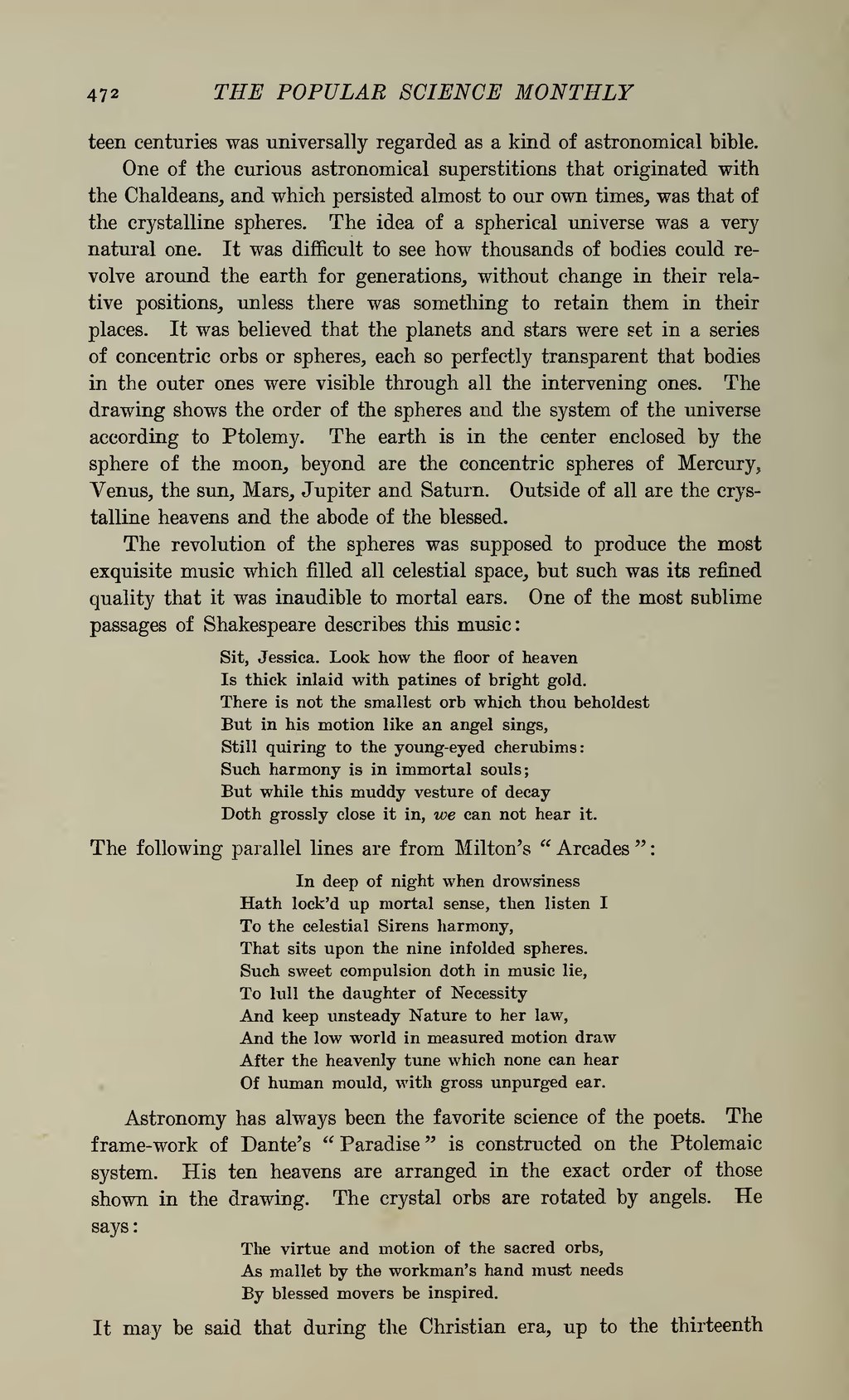teen centuries was universally regarded as a kind of astronomical bible.
One of the curious astronomical superstitions that originated with the Chaldeans, and which persisted almost to our own times, was that of the crystalline spheres. The idea of a spherical universe was a very natural one. It was difficult to see how thousands of bodies could revolve around the earth for generations, without change in their relative positions, unless there was something to retain them in their places. It was believed that the planets and stars were set in a series of concentric orbs or spheres, each so perfectly transparent that bodies in the outer ones were visible through all the intervening ones. The drawing shows the order of the spheres and the system of the universe according to Ptolemy. The earth is in the center enclosed by the sphere of the moon, beyond are the concentric spheres of Mercury, Venus, the sun, Mars, Jupiter and Saturn. Outside of all are the crystalline heavens and the abode of the blessed.
The revolution of the spheres was supposed to produce the most exquisite music which filled all celestial space, but such was its refined quality that it was inaudible to mortal ears. One of the most sublime passages of Shakespeare describes this music:
Sit, Jessica. Look how the floor of heaven
Is thick inlaid with patines of bright gold.
There is not the smallest orb which thou beholdest
But in his motion like an angel sings,
Still quiring to the young-eyed cherubims:
Such harmony is in immortal souls;
But while this muddy vesture of decay
Doth grossly close it in, we can not hear it.
The following parallel lines are from Milton's "Arcades":
In deep of night when drowsiness
Hath lock'd up mortal sense, then listen I
To the celestial Sirens harmony,
That sits upon the nine infolded spheres.
Such sweet compulsion doth in music lie,
To lull the daughter of Necessity
And keep unsteady Nature to her law,
And the low world in measured motion draw
After the heavenly tune which none can hear
Of human mould, with gross unpurged ear.
Astronomy has always been the favorite science of the poets. The frame-work of Dante's "Paradise" is constructed on the Ptolemaic system. His ten heavens are arranged in the exact order of those shown in the drawing. The crystal orbs are rotated by angels. He says:
The virtue and motion of the sacred orbs,
As mallet by the workman's hand must needs
By blessed movers be inspired.
It may be said that during the Christian era, up to the thirteenth
